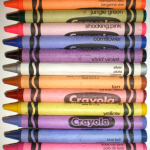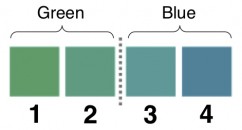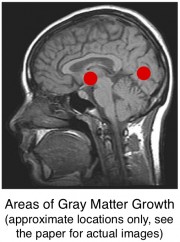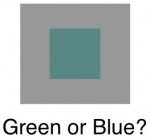A couple of months ago, PNASProceedings of the National Academy of Sciences published an article demonstrating that aerobic exercise can increase the size of your hippocampus. Well, for those of you interested in growing your gray matter without breaking a sweat, this latest (unrelated) study is for you!
 The study itself is refreshingly simple, as are the results. An ensemble of linguistics and brain researchers wanted to see if they could observe physical changes in the adult human brain as a result of learning new words. They were successful. For the study, several volunteers were taught a few new words to describe colors, and the researchers examined their brain structures by MRIMagnetic Resonance Imaging before and after the vocab lessons.
The study itself is refreshingly simple, as are the results. An ensemble of linguistics and brain researchers wanted to see if they could observe physical changes in the adult human brain as a result of learning new words. They were successful. For the study, several volunteers were taught a few new words to describe colors, and the researchers examined their brain structures by MRIMagnetic Resonance Imaging before and after the vocab lessons.
The volunteers were students at Beijing University. Presumably, they were all fluent in Mandarin, as the study was conducted in Mandarin Chinese. The students were shown four different colors – two were shades of green, and two were shades of blue (the colors in the picture below are extracted from the research paper). Over the course of five short sessions (2 hours total time spent) spread out over 3 days, the students were taught new names to use for each of the four colors. The new words were gibberish words – just single-syllable sounds that had no actual meaning in the Mandarin language.

As a side note – prior to the training, the students could distinguish between green and blue, even though they couldn’t verbally describe the more subtle difference between colors 1 and 2 (or between colors 3 and 4). The students were given a pre-test in which each of the four colors to be used was presented one at a time in random order, for a total of 10 times each. The students consistently identified shades 3 and 4 as “blue” and shades 1 and 2 as “green” – so everyone was in agreement about the basic difference between greens and blues.
By the end of the three days of lessons, the students were able to classify each color more precisely than “blue” or “green”. They could accurately and reproducibly identify each of the four colors by the specific made-up name that they’d been taught.
 Effectively the students had acquired new linguistic tools for differentiating colors that they couldn’t clearly differentiate with language before. Though this isn’t groundbreaking, I think it’s kind of cool in itself. It touches on the principle of linguistic relativity (“Wharfianism”), which posits that a person’s grasp of language affects their world view. Perhaps a person who knows precise words for different shades of green somehow has a richer, more acute awareness of the color subtleties in jungle foliage.
Effectively the students had acquired new linguistic tools for differentiating colors that they couldn’t clearly differentiate with language before. Though this isn’t groundbreaking, I think it’s kind of cool in itself. It touches on the principle of linguistic relativity (“Wharfianism”), which posits that a person’s grasp of language affects their world view. Perhaps a person who knows precise words for different shades of green somehow has a richer, more acute awareness of the color subtleties in jungle foliage.
But the more important result is that MRI brain scans actually revealed a statistically significant increase in gray matter volume in certain regions of the brain – one small area in the cerebellum and one in the visual cortex (an area known to be related to color perception). This is kind of stunning – the idea that just four new vocab words, learned over three days, can cause a detectable increase in brain volume.

So if your hippocampus is already big enough, or you don’t feel like going to the gym, try learning all of these Crayola crayon colors instead. I recommend wisteria, sunglow, and mauvelous. I’m sure it also wouldn’t hurt to try your hand at differentiating between color subtleties – for that, this is a fun test.
Though this study and its results were simple, it provoked several questions for me – some relevant, some just tangential. If anyone has any thoughts on these I’d be curious to hear!
(1) Is the increased gray matter in the noted brain regions accompanied by a decrease in gray matter in other regions? I mean, the change in volume is quite small, but still, your skull can only hold so much brain.
(2) Can a person make up their own words for things – say, for complex emotions – that don’t already have specific names and, by doing so, improve their ability to deal rationally and productively with said emotion? (Back to the linguistic relativity thing.)
(3) If this study was conducted in America with native English-speakers, would it require different shades of blue and green? Though the Chinese students all agreed that colors 1 and 2 were green and 3 and 4 were blue, I’m really not sure that I would consistently call color #3 “blue” if it was presented to me several times on a computer screen against a gray background (as was done in this paper):

The color looks a little green to me.
Citation:
Kwok, V., Niu, Z., Kay, P., Zhou, K., Mo, L., Jin, Z., So, K., & Tan, L. (2011). Learning new color names produces rapid increase in gray matter in the intact adult human cortex Proceedings of the National Academy of Sciences DOI: 10.1073/pnas.1103217108


One thing that is a little odd about that study is that there was no control group…I know it is a within groups design, but it still seems problematic?
In regards to achieving greater emotional regulation through language – I think there might be something to that. A lot of psychotherapy centers around developing an emotional vocabulary, so that feelings are more manageable. If someone actually took the time to clearly identify and explore an emotion they are experiencing, giving it a name and a highly personal meaning….well, I think they might be able to avoid paying $170.00 a week.